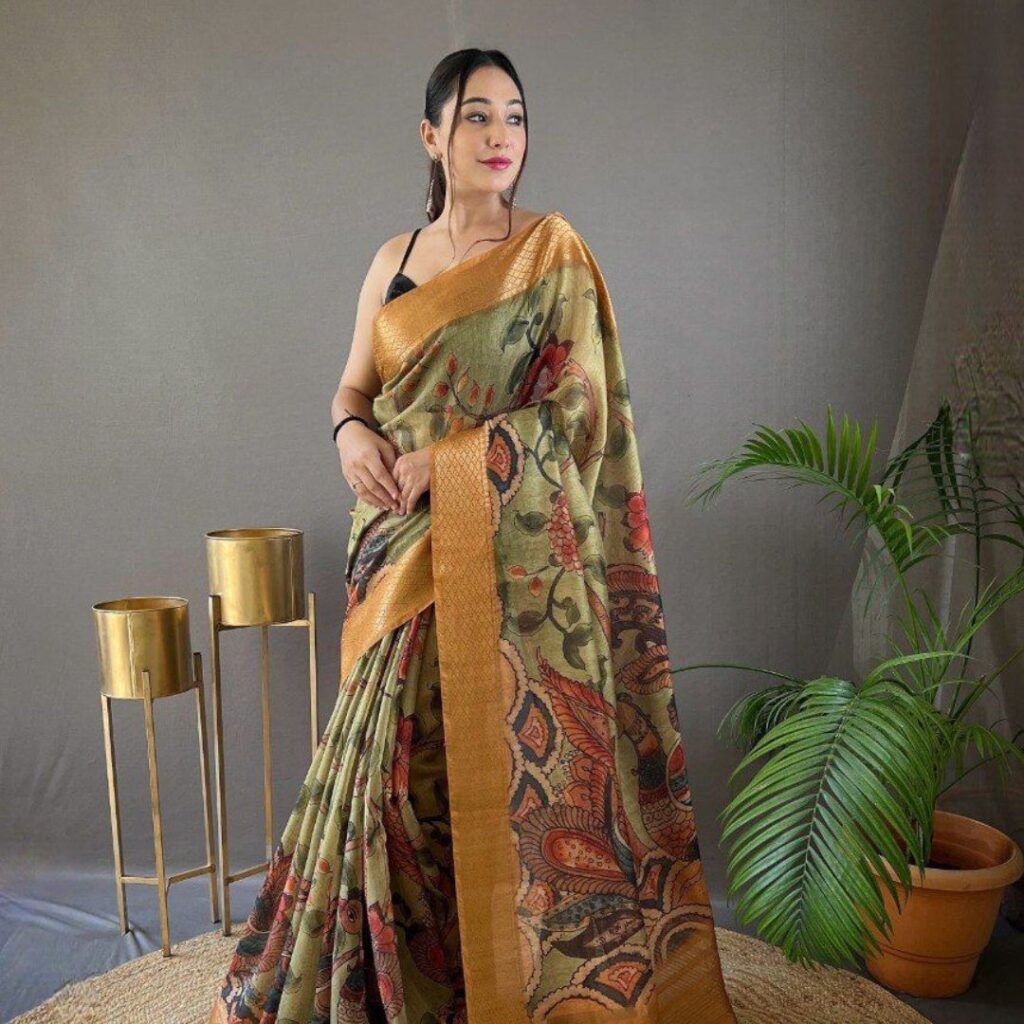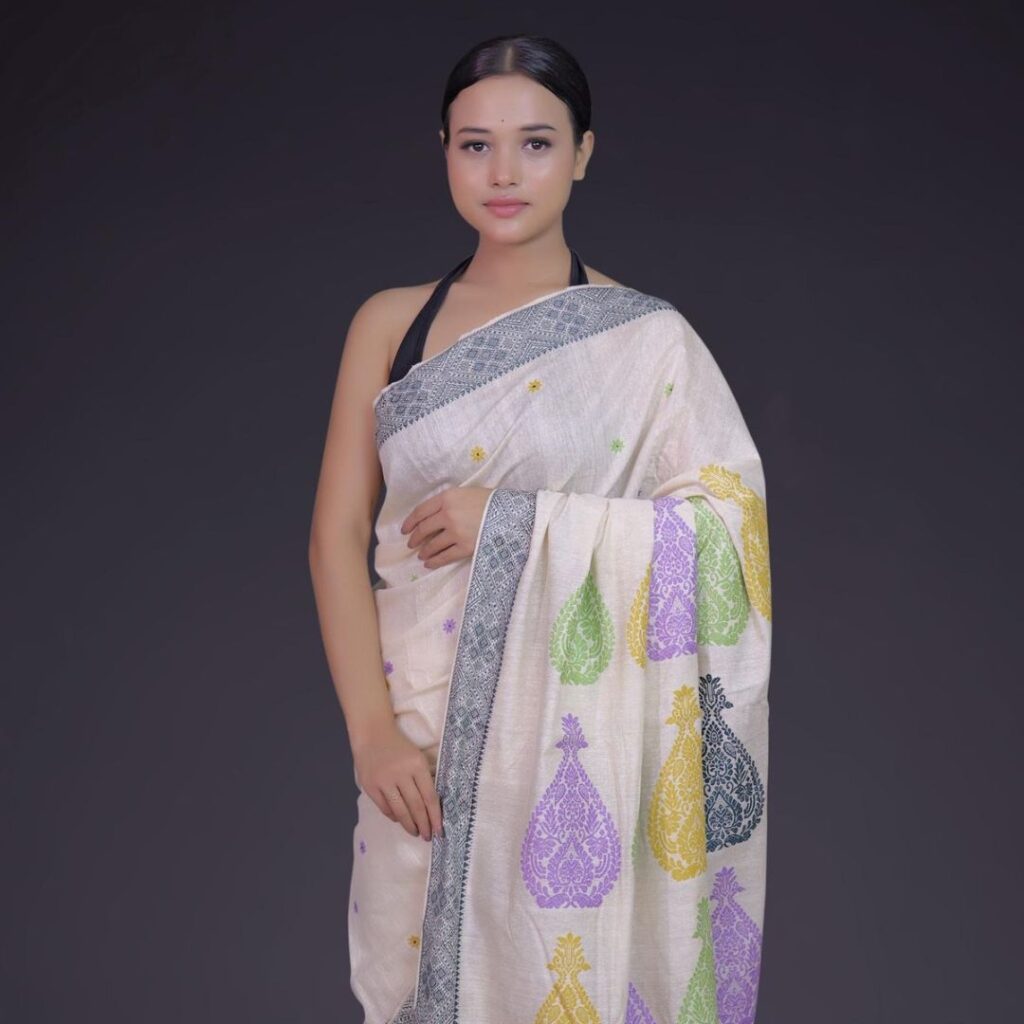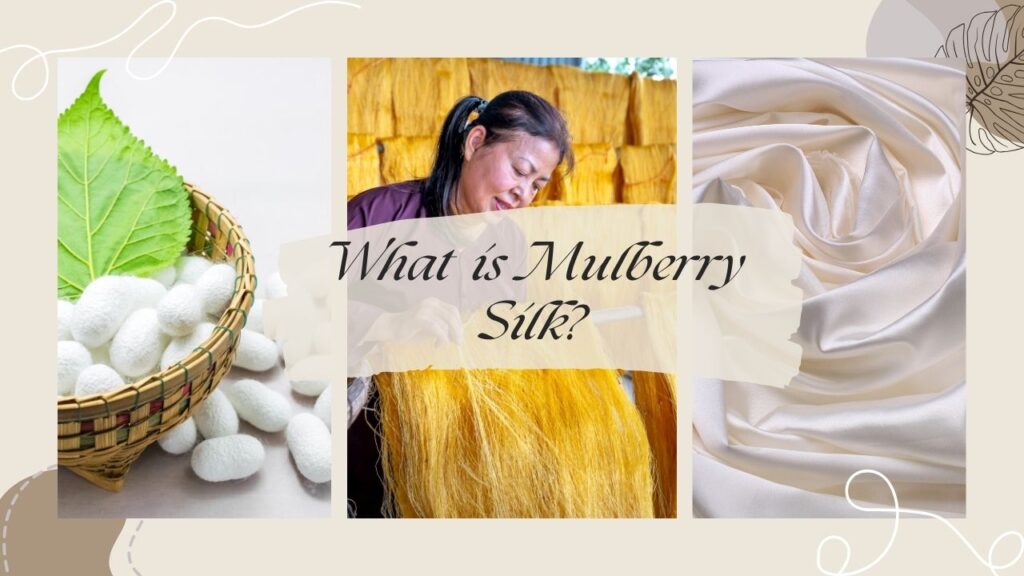Introduction
Long before we spun fabric on machines, the skilled hands of our ancestors were responsible for weaving stories while manufacturing silk!
A simple silk swatch can convey a deeper meaning in today’s world. Where was it manufactured, we wonder? Was it woven with love for all living things and a concern for the planet?
These questions lead us to look beyond the fabric and into the story behind it. Because in the folds of silk, there’s more than just luxury – there’s culture, conscience, and choice. And that’s where the beauty of Indian silks shines through.
Do you find yourself torn between Eri’s tender soul and Tussar’s majestic glow? Some of the most fascinating stories start right here with you. To discover what makes these two exceptional Indian silks unique in the modern world, let’s take a look at their story.
What is Tussar Silk?
Tussar silk is a fabric that captures the earthy glow of the monsoon sun. Often referred to as Kosa silk, it is primarily woven in West Bengal, Jharkhand, Chhattisgarh, and Bihar. Tussar silk has a distinct personality and isn’t your usual silk.
- Naturally golden
The eye is drawn to the rich, golden undertone.
- Airy and light
Ideal for days with a lot of humidity when you want to look sophisticated without feeling heavy.
- Unique texture
Tussar’s rustic charm comes from its somewhat coarse texture.
- Handcrafted tradition
Most frequently seen in dupattas and sarees that depict Indian seasons and festivals.
What’s the source? Known as Antheraea mylitta, wild silkworms primarily live in the wild and feed on forest leaves like Sal and Arjun. Because of this, Tussar silk has a stunningly natural appearance and a distinctiveness that machine-made silks cannot match.

What is Eri Silk?
Let’s head northeast to the verdant regions of Assam and Meghalaya, where Eri silk, fondly referred to as “Ahimsa silk,” takes root. The nature of this silk is gentle.
- Soft, cottony feel:
It has a matte, subtle elegance that clings to the skin.
- Strong and long-lasting:
Eri is ideal for everyday wear because it doesn’t tear easily.
- Cruelty-free:
No harm is ever done to the Philosamia ricini silkworm. Following the ahimsa (non-violence) principle, the silk is spun only after the moth has emerged from the cocoon.
- Comfort that never goes out of style:
Eri keeps you cosy in both hot summers and freezing winters.
Eri presents an alternative narrative that honours the planet, the insect, and the craftsman who infuses each thread with kindness.

Key Differences Between Tussar and Eri Silk: Sustainability and Ethical Aspects
Let’s put the essentials side by side for a clearer comparison:
| Feature/Aspect | Tussar Silk | Eri Silk |
| Origins | Central & Eastern India (wild silkworms) | Northeast India |
| Color & Texture | Golden, slightly coarse, natural shine | Matte, soft, cotton-like |
| Production Process | Usually involves boiling cocoons (not cruelty-free) | Moths allowed to emerge, cruelty-free |
| Feel & Wear | Light, breezy, festive, delicate | Strong, durable, cozy, all-season |
| Typical Uses | Sarees, dupattas, ethnic attire | Shawls, scarves, and daily wear |
| Ethical Choice? | Sometimes (with Ahimsa methods), mostly not | Yes, always |
| Sustainability | Biodegradable, supports rural artisans | Biodegradable, artisan-made |
| Care needed | Delicate (handle gently) | Tougher, easy for frequent use |
| Price Range | Often more affordable | Pricier (due to ethics & durability) |
How to Choose Between Tussar and Eri Silk?
Still undecided? Here is some amiable guidance:
- If you want that golden, festive feel and don’t mind spending a little more time and effort on your fabric, go for Tussar. For weddings, special events, or any day you want to draw attention, Tussar is fantastic.
- Choose Eri if you appreciate soft textures, comfort, and ethical manufacturing. If you value slow fashion and being environmentally conscious, Eri is the ideal daily companion.
Both varieties uphold long-standing weaving customs and assist talented artisans. Your decision is solely based on your beliefs, your feelings, and possibly the stories you wish to wear.
Conclusion
When it comes to Indian silks, there is no one-size-fits-all solution. When you want to feel regal and grounded in tradition, Tussar’s golden grandeur is ideal. Subtle and gentle, Eri is perfect for thoughtful, daily elegance because it offers solace and a clear conscience.
Both textiles are artistic creations that showcase generations of talent and affection. Whether you choose Tussar or Eri, you’re embracing a part of India’s history and making a decision that will influence mindful fashion in the future.
Frequently Asked Questions (FAQs)
1. Is Tussar silk cruelty-free?
Not typically. Most Tussar silk involves boiling the worm with the cocoon, though some ethical producers now use non-violent methods.
2. Why is Eri silk called “Ahimsa silk”?
Because the silk is collected after the moth leaves the cocoon, no harm comes to the insect.
3. Which is more durable—Tussar or Eri?
Eri silk is naturally stronger, making it a better pick for frequent, everyday use. Tussar is best saved for special moments.
4. Can both silks be worn all year round?
Eri is perfect for any season. Tussar, with its airy weave, shines brightest in warm weather.
5. Are these silks hand-woven?
Absolutely. Both are lovingly crafted by hand, supporting experts in rural communities.
6. Care tips for Tussar and Eri garments?
Wash gently in cold water, or choose dry cleaning. Let them dry in the shade and store them in cotton bags for best results.
7. Which silk costs more?
Tussar is generally easier on the wallet. Eri silk tends to be pricier thanks to its ethical journey and sturdiness.



